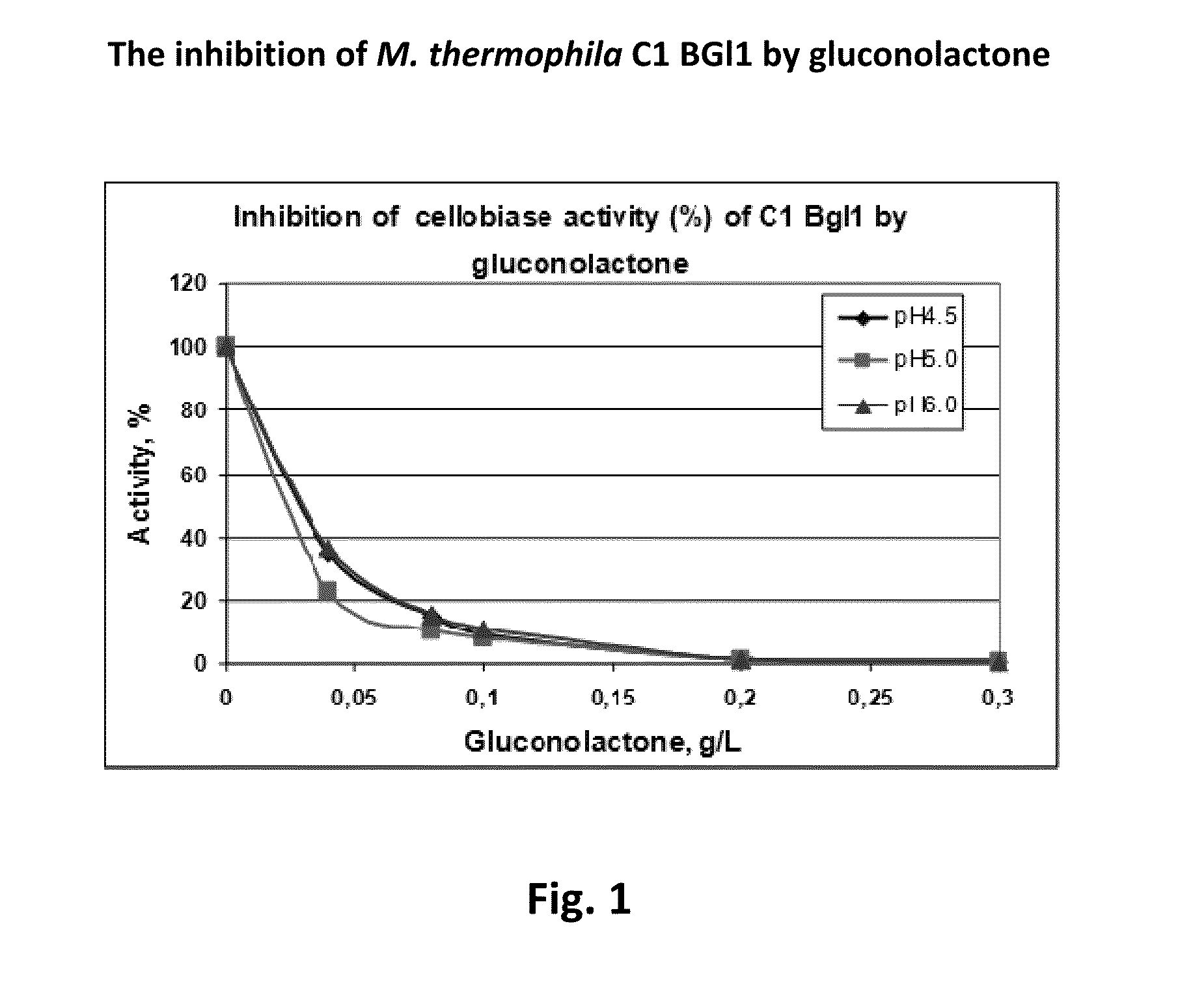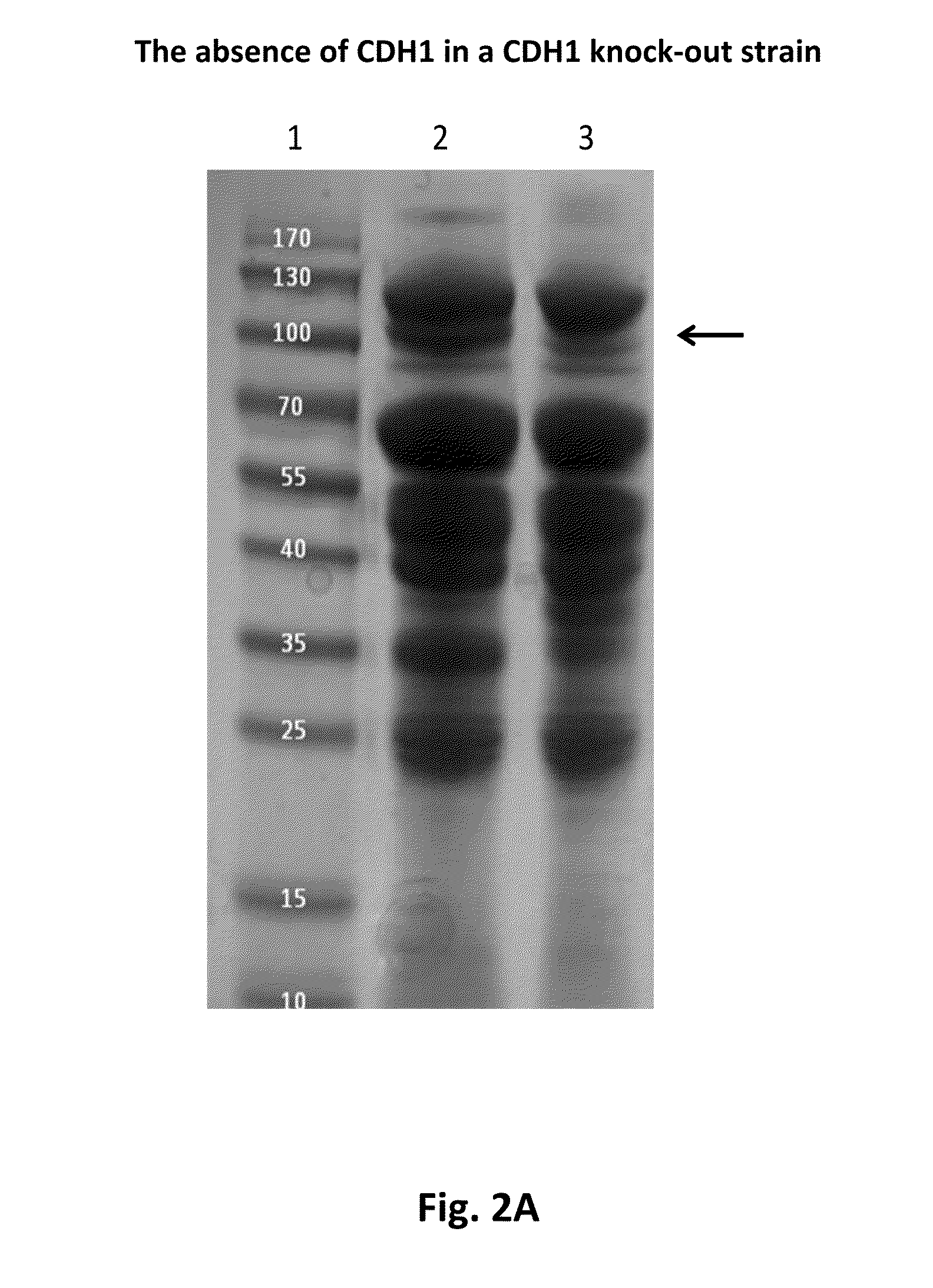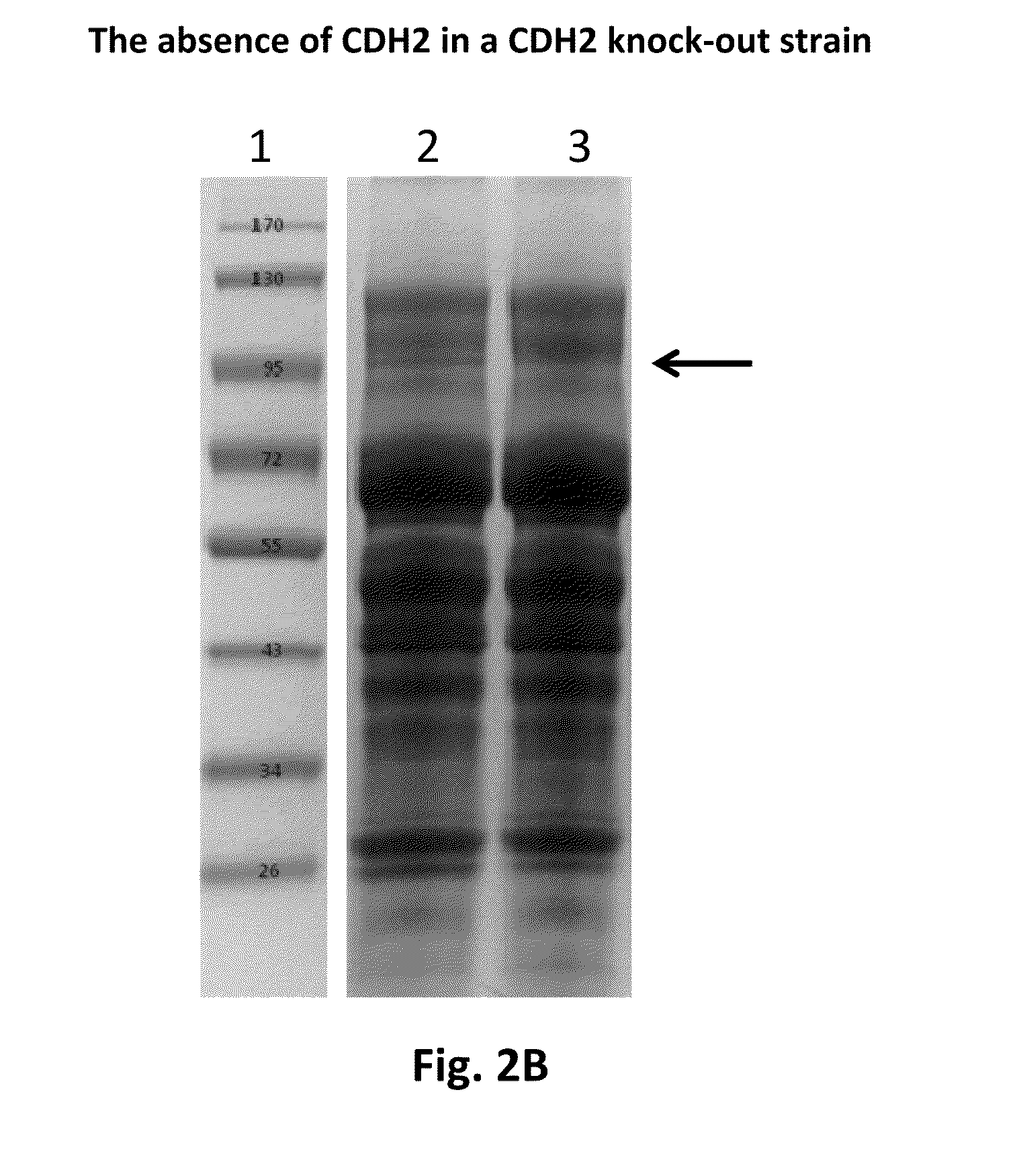Method of improving the activity of cellulase enzyme mixtures in the saccharification (LIGNO)cellulosic material
a cellulase and saccharification technology, applied in the field of modified filamentous fungal organisms, can solve the problems of difficult modification, isolation, and characterization of microorganisms which produce desirable enzyme mixtures for optimal hydrolysis of (ligno-) cellulosic materials, and achieve the effect of reducing levels or activities
- Summary
- Abstract
- Description
- Claims
- Application Information
AI Technical Summary
Benefits of technology
Problems solved by technology
Method used
Image
Examples
example 1
Inhibition of Cellulase Activity by Gluconolactone / Gluconic Acid
[0336]Purified Bgl1, Eg5, Eg6, CBH1, CBH2, and CBH4 from M. thermophila C1 were used to determine the level of inhibition by gluconolactone. For Bgl1, cellobiase activity was assayed by the following procedure: 0.4 ml of 2.5 mM cellobiose solution (in 0.1 M Na-acetate with pH 4.5, 5.0 or 6.0) was incubated during 5 min at 50° C. (with or without gluconolactone), then 0.1 ml of the enzyme (bgl1 from C1) solution was added (the dilution of the enzyme chosen at such a concentration in order to achieve 10% of cellobiose hydrolysis in 15 min, which is 0.072 g / L of glucose released). After 5, 10 and 15 min of incubation at 40° C., 0.1 ml of the reaction mixture was sampled and glucose concentration was determined immediately by the glucose oxidase-peroxidase assay (Megazymes). Gluconolactone (Sigma-Aldrich) was added in the reaction mixture at concentrations between 0-10 g / L (0, 0.04, 0.08, 0.1, 0.2, 0.3, 0.6, 0.8, 1, 2, 4, 5...
example 2
Construction of a Myceliophthora thermophila Strain Containing a CDH1 Gene Disruption
[0338]A derivative of the M. thermophila C1 strain UV18-25 (Accession No. VKM F-3631 D) was selected as the target strain for the cdh1 gene disruption. In order to create a cdh1 gene disruption strain, part of the cdh1 gene was deleted by replacing it with an AmdS selection marker. In short, the upstream region of the cdh1 gene was amplified using primers
(SEQ ID NO: 1)5′-CACAAGCACTGCGAGTACCAC-3′and(SEQ ID NO: 2)5′-GTCGAGCTTCATTTTTTCGAAGCGCAGCAACTTCAAG-3′;
and an internal region of the cdh1 gene was amplified using primers
(SEQ ID NO: 3)5′-CTTGAAGTTGCTGCGCTTCGAACTACCTAGTTTGTGTGTG-3′and(SEQ ID NO: 4)5′-CACCGTTCTCCGCTTCTCAC-3′.
These two PCR products were then fused in a fusion PCR experiment using primers
(SEQ ID NO: 1)5′-CACAAGCACTGCGAGTACCAC-3′and(SEQ ID NO: 4)5′-CACCGTTCTCCGCTTCTCAC -3′.
[0339]The resulting PCR product was subsequently cloned into the pGEMTeasy vector (Promega) and into this vector a DN...
example 3
Construction of a M. thermophila Strain Containing a Cdh1 Gene Disruption and a Cdh2 Gene Disruption
[0340]The AmdS selection marker was removed from the strain derived from M. thermophila C1 strain UV18-25 (Accession No. VKM F-3631 D) containing the cdh1 gene disruption (described in example 2) by methodologies well known in the art, that encompassed counterselection on fluoro-acetamide plates, and Southern analysis of positive candidates to verify to the correct removal of the AmdS marker. The resulting strain was used as the target strain for a cdh2 gene disruption.
[0341]In short, the upstream region of the cdh2 gene was amplified using primers
(SEQ ID NO: 6)5′-CAACACGAGACCCGAGATGG-3′and(SEQ ID NO: 7)5′-CATTGGTTGGTACGTGAGGGTTCGAACCATAAGAGCGGAGGTCAGG-3′;
and the downstream region of the cdh2 gene was amplified using primers
(SEQ ID NO: 8)5′-CCTGACCTCCGCTCTTATGGTTCGAATTAGAGGTCTTGTTGGGCCT-7′and(SEQ ID NO: 9)5′-GAGCGGCTTTGGCAATTGAG-3′.
[0342]The upstream fragment was cloned into the pGEMT...
PUM
| Property | Measurement | Unit |
|---|---|---|
| melting temperatures | aaaaa | aaaaa |
| temperature | aaaaa | aaaaa |
| temperature | aaaaa | aaaaa |
Abstract
Description
Claims
Application Information
 Login to View More
Login to View More - R&D
- Intellectual Property
- Life Sciences
- Materials
- Tech Scout
- Unparalleled Data Quality
- Higher Quality Content
- 60% Fewer Hallucinations
Browse by: Latest US Patents, China's latest patents, Technical Efficacy Thesaurus, Application Domain, Technology Topic, Popular Technical Reports.
© 2025 PatSnap. All rights reserved.Legal|Privacy policy|Modern Slavery Act Transparency Statement|Sitemap|About US| Contact US: help@patsnap.com



